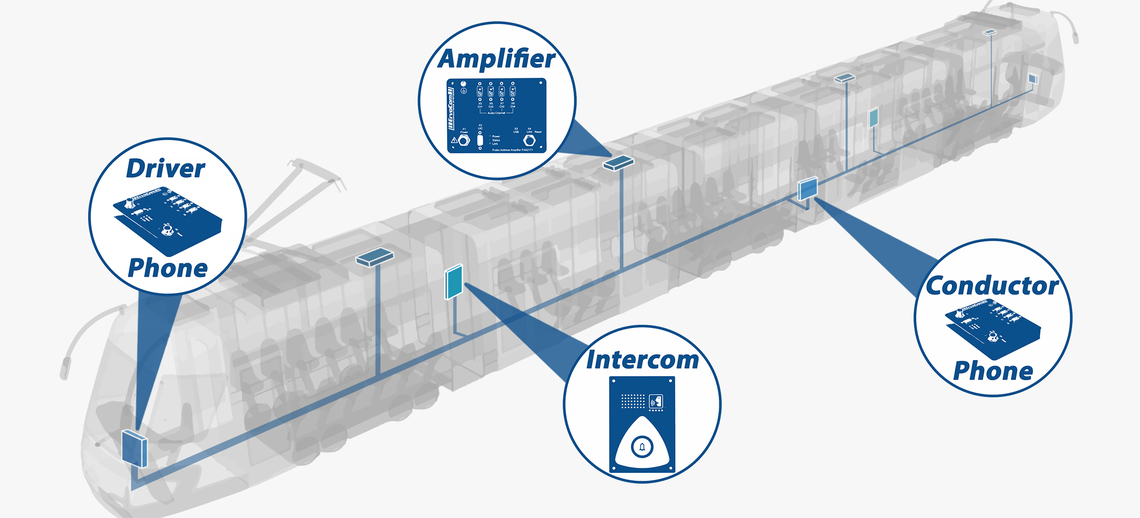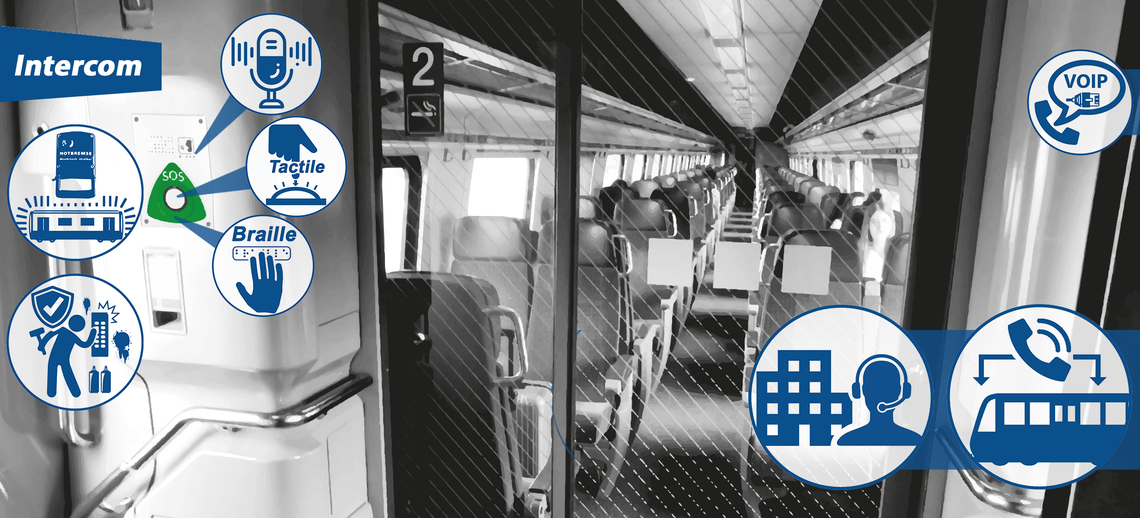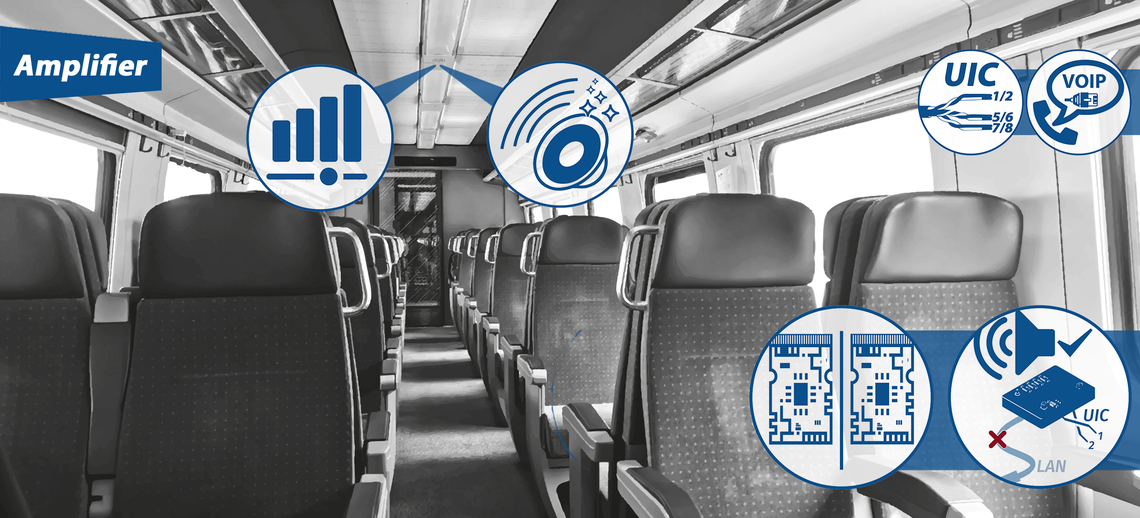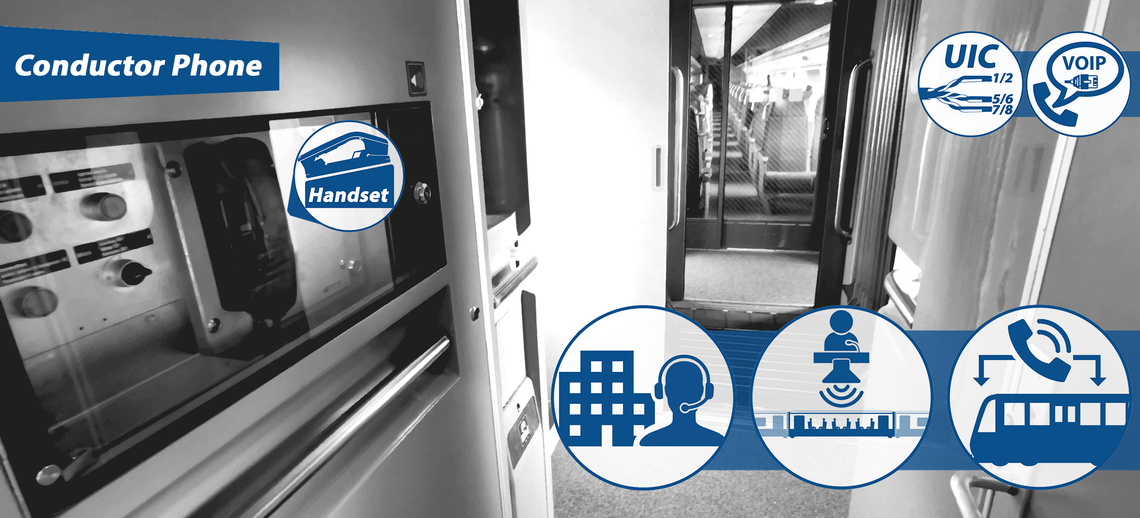With the PAN system, ErvoCom ensures reliable communication between the train driver, passengers and the control center. The system consists of a central control software (RCSS2170), which is responsible for the digital switching, as well as the digital audio amplifier PAA2171, the passenger intercom terminals FGSS2197 & HRSS2197 and a driver telephone uCOB2200 as a communication interface for the train driver or train attendant. All components are interconnected via the on-board Ethernet network. For redundancy considerations the audio amplifiers and the driver telephone can also use a UIC interface.
Usually the train announcements are fully automatic based on the timetables and actual geo-location data of the passenger information system. Nevertheless, there are always situations where the driver or the control center needs to inform the passengers about delays or special events by means of manual announcements. By using the driver's telephone uCOB2200 and its connected handset or gooseneck microphone the driver has the possibility to place manual announcements. The control center in turn has the option of establishing communication with the passengers via the TRS2090 train radio system or via the LTE router. This allows the train driver to fully concentrate on the journey. He is able to passively listen to the incoming control center announcement via the cabin loudspeaker.
Audio switching (RCSS2170)
The RCSS2170 is responsible for switching the audio streams. Audio sources are categorized and output according their priority. Digital signal processing of all audio information allows for expanding the system for additional audio sources and other functions.
Audio amplifiers can be controlled individually, allowing selective announcements and volume control for each passenger coach. For volume control, different criteria such as vehicle speed, time of day or ambient noise level in the passenger compartment can be used. Since the audio lines do not have to be routed through the car couplings, the cabling effort is reduced a lot.
Audio amplifier PAA2171
The audio amplifier converts the digital audio data coming from the RCSS on-board computer into analogue amplified signals that are forwarded to the loudspeakers. In addition, the digital amplifiers are equipped with a UIC interface, which can be used as communication redundancy for improved availability e.g. in case of fire. The PAA2171 is used for decentralized public address (per passenger car) of the train. Due to the digital transmission of the audio data, interference on the useful signal can be significantly reduced. The conversion of the audio signal back to analog is only performed in proximity to the loudspeakers: at the respective amplifier. Thus, the loss of audio quality, which occurs with long vehicles at analog systems in multi-tractions, can be completely eliminated.
Intercom terminals FGSS2197 & HRSS2197
The passenger and emergency intercom terminals FGSS2197 / HRSS2197 are used as communication interfaces for the passengers. The Ethernet based digital voice communication interface is on the rear side of the terminals. It also can be used for the power supply (PoE). By using state-of-the-art audio processors, feedback from the loudspeaker as well as ambient noise can be filtered very effectively. Thus, the FGSS2197 enables excellent speech clarity for both conversation participants even at high driving speeds with a lot of ambient noise.
Driver telephone uCOB2200
The universal Communication Box uCOB2200 serves as a universal audio communication interface, which can be used as a train-attendant or conductor telephone, driver's telephone in the driver's cab for communication with passengers or as a gateway for communication from VoIP-SIP to UIC.
Interfaces are available for handset, gooseneck microphone and loudspeaker, so that the audio equipment can be fully adapted to the needs of each customer. No matter if a call has to be set up via UIC or LAN (using VoIP-SIP), the uCOB2200 offers all interfaces and possibilities for the specific communication requirements.







